Featured
Not the ticket for fair play
December 7, 2011
On New Year’s Day, California will begin offering a gift of sorts to motorists across the state who’ve failed to pay a cent on traffic ticket fines and penalties that were due on or before January 1, 2009. Now, under a new law, they’ll have six months to pay just half of what they owe.
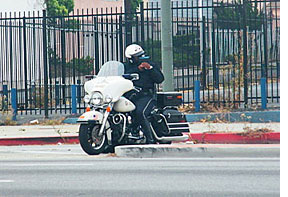 In the legislature’s view, getting at least some money into the state’s depleted treasury is better than getting none. And for the offenders, well, the upside is obvious.
In the legislature’s view, getting at least some money into the state’s depleted treasury is better than getting none. And for the offenders, well, the upside is obvious.
But not everyone catches a break under the amnesty program, thanks to some wrongheaded rules concocted by the statewide Administrative Office of the Court. The AOC has determined that only people who’ve paid nothing on their tickets during the past two years are eligible for the 50% discount. This means that if you’ve sent along any money at all since 2009, then you’re excluded from the deal. In L.A. County, some 75,000 people fall into this category.
If you’re like me, you’re probably thinking: What? Why would we essentially penalize people who’ve made some good-faith efforts to pay their tickets while offering bargain rates to those who haven’t?
Actually, there’s no good reason.
The AOC is simply—and cynically—playing the odds. It apparently figures that anyone who’s made good on even a sliver of their debt is likely to keep paying. Conversely, those who’ve paid nothing will probably continue along that same course. This latter group, the thinking goes, needs special inducements.
But here’s the problem: it’s blatantly unfair. What’s more, there’s no place in the law that calls for this exclusion. In fact, the Los Angeles County Counsel and the counsel for the Los Angeles Superior Court have concluded that the AOC incorrectly incorporated an eligibility requirement not found within the four corners of the statute, SB 857.
Next Tuesday, the Board of Supervisors will consider a motion I’ve authored to reverse this inequity. I’ve asked my colleagues to join with me in sending a five-signature letter to the California Judicial Council, urging that the AOC be required to include in the amnesty program individuals who’ve made any payments towards fines incurred or due prior to January 1, 2009.
We need to send a clear message to court administrators that such fiscal gamesmanship—even in the service of a good cause—is unacceptable.
Posted 12/7/11
We’ve all got a stake in the jail
November 16, 2011
The Men’s Central Jail sits on the edge of downtown, a non-descript structure surrounded by a cottage industry of bail bondsmen. Built mostly during the Kennedy Administration, it’s a deeply depressing place, filled with 4,000 or more men crammed into dank cells.
A good number of them are short-timers—misdemeanor offenders serving just a fraction of their sentences because of the overcrowded conditions. But there are hundreds upon hundreds of others—accused murderers, rapists, drug kingpins and the like—who are incarcerated in the so-called MCJ while they await trial, a process that can sometimes consume years.
Unfortunately, it’s a place where some Sheriff’s Department deputies also have crossed lines of behavior demanded of them in a civil and constitutional society.
As you may have heard or read, Los Angeles County’s sprawling jail system, which includes the more modern Twin Towers Correctional Facility, is under investigation by the FBI because of alleged brutality by deputies who run the operation.
On Friday, a new investigative body, comprised of seven distinguished individuals, will begin its inquiry into excessive force behind the bars. The Citizens’ Commission on Jail Violence was unanimously created by the Board of Supervisors through a motion by Mark Ridley-Thomas and me. The commission was infused with a no-holds-barred mandate to help us understand how a small minority of deputies could poison the culture of an entire institution.
In the hopes of better understanding the challenges ahead for the commission and the Sheriff’s Department, I visited the Men’s Central Jail this week with Sheriff Lee Baca and Captain Ralph Ornelas, who oversees the facility. (See the photo gallery below.) Day in and day out, I can’t imagine a tougher, more menacing workplace, especially for rookie deputies who spend their first 3 to 5 years assigned to the jails—a practice now rightfully being reexamined.
Ornelas, the Brooklyn-born son of a New York cop, was put in charge of MCJ in March. He says he’s determined to be a force for change, inspiring a fundamental shift in the way his charges approach their jobs. “It’s about brains, not brawn,” he tells the deputies. “Let’s be more cerebral, more sophisticated, more professional.”
He says that when deputies resort to force too quickly, they’re not only unnecessarily escalating situations but undermining their own effectiveness today and in the future when they’ll be in patrol cars. “You have to develop your people skills, think through problems. It’s about verbal tactics. This way, you become a more confident deputy, who can solve problems.”
“The deputy in the jail,” he preaches, “becomes the deputy on the streets.”
I wish Ornelas and the Citizens’ Commission much success in their parallel missions because the stakes could not be higher—not just for the inmates and deputies but for all of us.
In the months ahead, thousands of new inmates will be entering our jail system thanks to a monumental shift of responsibilities in California’s criminal justice system called realignment. As of October 1, inmates convicted of certain non-violent, non-serious, non-sexual crimes that used to get them a stay in one of California’s 33 prisons, are now being sentenced to county jails.
Virtually overnight, the management of our lockup has become immensely more complicated, requiring daily decisions about which inmates should be freed earlier to clear space for the arrivals. The implications for the safety of our neighborhoods are enormous.
So while it may be easy for some to dismiss the pain inflicted on inmates by their jailers, it’s important to remember that what happens inside that difficult place can affect each and every one of us. Every facet of the facility must be operated with precision and professionalism. The jail may be located on a small, obscure street named Bauchet, but this is one problem that’s in everyone’s backyard.
Photos by Henry Salazar/Los Angeles County
Posted 11/16/11
Hitting the high notes
October 27, 2011
Like a lot of people, I caught the opera bug relatively late.
And I have my son’s Academic Decathlon team at Monroe High School to thank for that.
One year, their Super Quiz subject was opera, and I was treated to strains of great works like “Carmen,” “Aida” and “La Traviata” coming from David’s room each night as he listened to audiotapes in preparation.
And, to my surprise, I liked what I heard—a lot.
Fast forward a few years. I was in Salzburg on a mission to try to secure a major donation for our county’s Music Center. Though jet-lagged, Barbara and I went to hear Plácido Domingo perform in “Parsifal,” a Wagner opera that goes on at Wagnerian length—easily 5½ to 6 hours.
Afterwards, we had a chance to go backstage and meet Domingo. Wagnerian operas are not among my favorites but I was thrilled at the prospect of meeting the most renowned tenor on the planet, and we had a memorable exchange.
“Oh, you don’t know what it’s like to stand up there and sing for 5½ hours,” he told us.
“You don’t know what it’s like to sit there and listen for 5½ hours!” Barbara retorted.
And that, to paraphrase the old line from “Casablanca,” marked the beginning of a beautiful collaboration. I’ve been fortunate to work with Domingo and James Conlon and other leaders as they’ve put opera on the map in Los Angeles. I even had a chance to interview Domingo at the Hollywood Bowl a couple of years back.
As L.A. Opera celebrates its 25th birthday this month, its artistic successes coincide with what I like to think of as the golden age of arts in Los Angeles.
With remarkable new facilities ranging from Disney Hall to the Valley Performing Arts Center at Cal State Northridge to the Broad Stage in Santa Monica—to name just a few—we’re truly in the midst of a cultural explosion.
Local audiences and arts lovers are big winners in this boom, of course. But the benefits don’t stop there. The arts now employ more people than the defense industry in Southern California. Aside from those directly involved, arts institutions create new customers for surrounding businesses.
And cultural tourists from around the world flock here for performances at the county’s Music Center and other venues—enhancing our global arts reputation and serving as an important engine of our economy.
I’m grateful that our Board of Supervisors has long realized that investment in the arts, far from being a frivolous expenditure, is smart public policy—both from an economic and quality of life point of view.
That’s why, in an effort to make sure our top musicians reach the broadest possible audience, regardless of means or mobility, my office has underwritten L.A. Opera and L.A. Philharmonic broadcasts on KUSC 91.5 FM.
If you can make it to the opera’s 25th birthday open house at the Dorothy Chandler Pavilion on Saturday, November 5, I hope you will. You certainly can’t beat the price—free. And if you can’t make it, I hope you will tune in to KUSC’s live broadcast of “The Opera Show” from the lobby from 9 a.m. to noon.
Because, as my own experience shows, you never know where listening in on a little opera will take you.
Posted 10/27/11
A look behind the bars
October 13, 2011
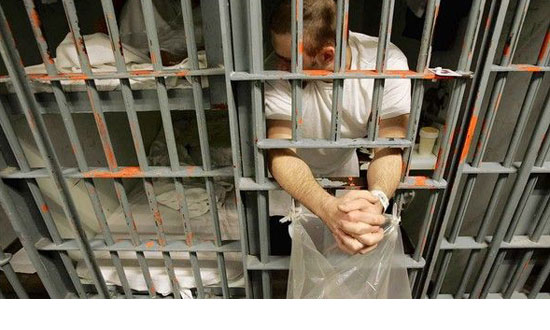 In recent weeks, we’ve seen a steady and serious stream of allegations involving excessive force inside Los Angeles County’s jail system, allegations that are undermining public confidence in our commitment to the constitutional protections afforded inmates.
In recent weeks, we’ve seen a steady and serious stream of allegations involving excessive force inside Los Angeles County’s jail system, allegations that are undermining public confidence in our commitment to the constitutional protections afforded inmates.
Media and advocacy organizations have detailed numerous cases of alleged inmate mistreatment that, if true, suggest a breakdown of accountability and discipline within the agency that runs the jails, the L.A. County Sheriff’s Department. These incidents are notable not only because of the alleged ferocity of the beatings but because some of them were reported by civilian observers who say they were shocked and scared by what they witnessed.
Allegations of brutality in the nation’s largest jail system are not new, and the Sheriff’s Department itself can rightly point to a history of firing and disciplining deputies who’ve been accused of excessive force. I feel confident that the vast majority of deputies are conducting themselves appropriately in the stressful environment of our overcrowded lock-up. But there appears to be a certain brazenness in these recent cases that raises questions about whether a culture of disregard for the constitutional rights of inmates is taking root among some deputies.
Currently, the FBI is investigating this alleged mistreatment of prisoners, and Sheriff Lee Baca has assembled an in-house task force to examine, or reexamine, a number of alleged incidents compiled by the ACLU and others. I’m confident that these will lead to disciplinary action and criminal prosecutions if warranted.
Still, more is needed. The Board of Supervisors is responsible to the taxpayers and to the broader community for the safe, efficient and constitutional operation of our jail system. To that end, Supervisor Mark Ridley-Thomas and I will introduce a motion at the board’s Tuesday meeting urging our colleagues to create a Citizen’s Commission of five distinguished county residents to “conduct a review of the nature, depth and cause of the problem of inappropriate deputy use of force in the jails, and to recommend corrective action as necessary.”
It also would be the responsibility of the commission’s five members, each one appointed by a member of the Board of Supervisors, to hold the sheriff and the board accountable for the “speedy and effective implementation” of potential solutions.
As Supervisor Ridley-Thomas and I write in our motion: “It is the Sheriff himself, as head of the department, and the members of the Board of Supervisors as the ultimate decision-makers for the County, who will be held accountable for the quality and constitutionality of law enforcement services to the county.”
Posted 10/13/11
Redistricting’s silver lining
September 27, 2011
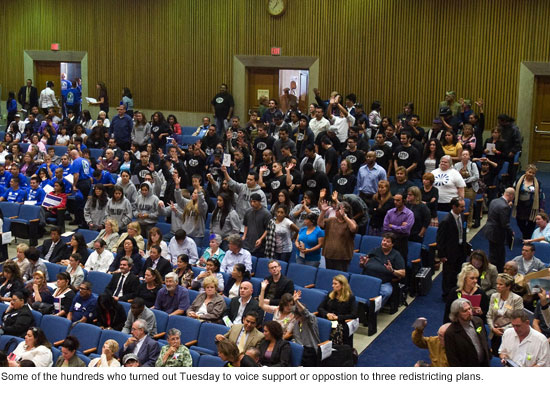 In my many years of public life, never have I seen the kind of massive and spirited civic engagement that has unfolded during these past few weeks of Los Angeles County’s redistricting efforts. On Tuesday, overflow crowds once again converged on the Hall of Administration as the Board of Supervisors, on a 4-1 vote, approved new boundary lines for the five supervisorial districts.
In my many years of public life, never have I seen the kind of massive and spirited civic engagement that has unfolded during these past few weeks of Los Angeles County’s redistricting efforts. On Tuesday, overflow crowds once again converged on the Hall of Administration as the Board of Supervisors, on a 4-1 vote, approved new boundary lines for the five supervisorial districts.
The approved plan, while not perfect, is far better for residents throughout Los Angeles County than the two proposed alternatives. It keeps together communities of shared geographic, economic and environmental interests (to name a few), while remaining fully compliant with the federal Voting Rights Act, which protects the crucial electoral interests of minority groups.
To be sure, the process that culminated in Tuesday’s historic vote was punctuated with strong words and heated emotions. But there was something encouraging about it all, no matter what your views or loyalties. From one end of the county to the other, from its urban core to its rural reaches, people were engaged, writing thousands of letters and appearing en masse to express their diverse opinions on representative democracy in their communities.
The debate forced us to assess—and rally behind—the things that are most important to us in this complicated region of competing interests and values. We may not always have liked what we heard, but I had the sense that, at least, we were listening and learning. Consider this: despite the passionate feelings on all sides, I can’t recall a single speaker of the hundreds who testified who was shouted down or disrespected.
As we move forward, I know this issue could continue to generate controversy with potential litigation. But I do believe it’s important at times like these to reflect on those things that we, as a broader community, can take pride in. I’d like to thank all of you who participated in our deliberations and demonstrated your commitment to our collective future.
Posted 9/27/11
Expo means jobs
September 13, 2011

It took more than half a century, but this week marked the beginning of a new era as we broke ground on the first mass transit rail project to hit the Westside of Los Angeles since the Red Cars.
The Expo light rail line, which will run from downtown L.A. to Santa Monica beginning in 2015, offers people traveling to and from this jobs-rich and traffic-choked part of our county a real alternative to sitting and stewing in the gridlock that’s become an unfortunate way of life on the Westside for decades. Tens of thousands of commuters, residents and tourists stand to benefit every day.
To get a sense of the full sweep of what the 15.2-mile Expo Line will deliver, check out this map of the route. In the coming months, trains will start running in the line’s first segment, and construction will begin on Expo Phase 2, which will go from Culver City to 4th Street and Colorado Avenue in Santa Monica.
When completed, we expect the Expo Line to be one of the busiest light rail lines in the country. And its downtown connections to Metro’s existing and future lines promise to magnify its significance across the region.
The good news doesn’t stop there; all of us will be breathing easier as a result of the car trips that this new light rail light line will help eliminate.
But the most immediate upside is this: Expo Phase 2, largely funded by the Measure R ½-cent sales tax overwhelmingly approved by county voters for transportation improvements, can start putting people back to work again.
New jobs, more than 9,000 of them, are being created. And those jobs have coattails, creating ancillary jobs and paychecks that in turn pump new life into struggling local businesses and services.
As job creation rightly assumes new urgency as Topic No. 1 in the national political dialogue, we’ve got news for our leaders in Washington and Sacramento: The solution to fixing our national economy can start right here in Los Angeles County.
The American Jobs Act, released by President Obama this week, includes nearly $3.4 billion for California transit and modernization projects, which the White House says could translate to at least 51,500 jobs here. But we can do more.
We have the projects—not just Expo Phase 2, on which we broke ground Monday, but the much-needed Westside Subway extension and others—that together can put 166,000 people back to work. Los Angeles Mayor Antonio Villaraigosa’s plan to tap future Measure R funds to jumpstart these local transit projects offers a clear way to get our economy moving in the right direction.
And that’s a train that officials at every level of government need to jump aboard now.
Posted 9/13/11
United we stood
September 8, 2011
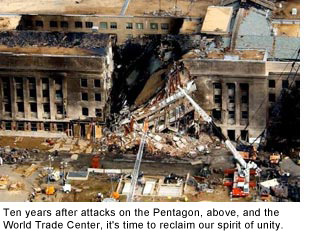 We all remember where we were. In my case, it was Washington, D.C., where, just back from a morning jog to the Arlington Memorial Bridge, I watched on my hotel room television as those first unbelievable images of the World Trade Center started pouring in. Shortly after, Washington itself turned into a cacophony of screaming sirens and confusion, the White House ringed with concentric circles of machine-gun-toting Army and Secret Service officers, the National Mall a veritable military encampment.
We all remember where we were. In my case, it was Washington, D.C., where, just back from a morning jog to the Arlington Memorial Bridge, I watched on my hotel room television as those first unbelievable images of the World Trade Center started pouring in. Shortly after, Washington itself turned into a cacophony of screaming sirens and confusion, the White House ringed with concentric circles of machine-gun-toting Army and Secret Service officers, the National Mall a veritable military encampment.
In the days to come, business as usual ground to a halt, of course. My scheduled meetings were cancelled (except for one with the Secretary of Veterans Affairs, from whose office we both gazed out at a still-smoking Pentagon.)
It was four days later that I was finally able to catch a plane back to Los Angeles, where one of the most moving sights I encountered as I drove toward home was a banner and flag store on Vine Street in Hollywood, where a line of people stretched around the block to buy American flags.
For me, back from our nation’s capital in its moment of crisis, that line of my flag-buying fellow Angelenos brought it all home viscerally—that we were all standing as one, regardless of where we happened to live.
There are no silver linings in the aftermath of attacks as dastardly as those that claimed nearly 3,000 lives in New York, Washington and Pennsylvania on September 11, 2001.
But there are indelible memories of an extraordinary test of our national character in which we showed the world—and each other—exactly what we were made of.
I don’t think there’s ever been a time in my memory when people came together in common cause and unity as they did then. Party didn’t matter, ethnicity didn’t matter, religion didn’t matter—we were all united as I’ve never seen us before. We were all Americans.
It’s something I’ve never forgotten.
This 10th anniversary of the September 11 attacks is a watershed mark in our history. I find myself talking these days to young people—those too young to remember what happened well, or at all—and I feel a responsibility to convey to them, as the Pearl Harbor generation conveyed to me, what it meant to live through those momentous days.
As Elie Wiesel has so often said, memory is a very powerful thing. We remember 9/11 so that these lives will not be lost in vain, and to recommit ourselves to never experiencing anything like this ever again.
This is not a once-a-year or a once-a-decade commitment. These events are always with us. And I suspect that like me, you feel a surge of gratitude and remembrance every time a fire truck passes by, flying the American flag or proudly emblazoned in memory of fallen FDNY colleagues. What we feel is a day-in, day-out recognition of these first responders’ bravery and service under pressure—an outward manifestation of the best we as a society have to offer.
This 10th anniversary gives us a chance to acknowledge that debt of gratitude, remember those whose lives were lost and recapture the spirit of unity that permeated our nation for all too short a time.
Posted 9/8/11
From scheme to scam
August 30, 2011
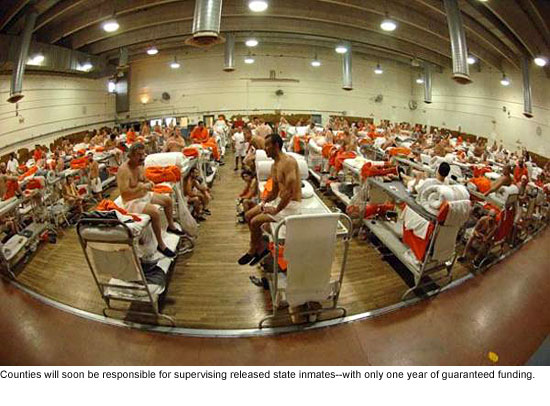 In Sacramento, it was simply called “realignment”—a seemingly benign name for a plan that we now believe could lead to higher crime rates and huge, unsustainable costs for Los Angeles County.
In Sacramento, it was simply called “realignment”—a seemingly benign name for a plan that we now believe could lead to higher crime rates and huge, unsustainable costs for Los Angeles County.
In short, as I warned in January, the county was conned.
Realignment represents a massive shift in criminal justice responsibilities. Beginning October 1, the counties, not the state, will begin supervising thousands of newly released California prison inmates convicted of non-violent, non-serious, non-sexual crimes. What’s more, such future defendants will be sentenced to county jail, rather than state institutions, which means that some 7,000 additional inmates a year will be crammed into our already crowded jail system.
And here’s the capper: the legislation that created these profound and costly changes guarantees state funding only for the first year. The price tag for the second year is an estimated $300 million. If the state’s budget remains as stressed as it is, who knows whether we’ll get all or any of that amount. At the risk of sounding cynical, I believe the state was more concerned about vaporizing these expenses from its deficit-plagued budget than about the effectiveness of our criminal justice system.
Earlier this year, in an effort to obtain buy-in from California’s counties, the state dangled the promise of realignment funding for five years, along with a constitutional amendment for the years beyond that. I sharply questioned the likelihood of that happening. But we were assured that the money would be there. As a result, counties across the state took the bait and are now on the hook.
Indeed, once the state removed this financial burden from its books and foisted it on local governments, the deed was done. The state now has no incentive to make good on its earlier promise to fully reimburse counties for their new supervision and incarceration responsibilities.
So, beyond the fiscal dangers, what does realignment mean for crime in our county? Here’s what Los Angeles County District Attorney Steve Cooley said in a letter on Tuesday to the Board of Supervisors. “Those who view realignment as a positive development are not just overly optimistic, they are flat wrong. We are in the awful position of having to wait for further crime and substantial victimization to be proven right.”
The logic is persuasive. As the county jails become more crowded with defendants formerly sentenced to state prison, Sheriff Lee Baca will likely have no choice but to increase the number of early releases. He’s done a yeoman’s job of juggling the jail population. But as we’ve seen in the past, this can potentially lead to the commission of more crimes. I hope the district attorney and I are wrong. Still, there’s no question that realignment is creating conditions that do not favor greater public safety.
Like it or not, however, this is now California law and we’re responsible for—and committed to—getting the job done smartly and efficiently. As part of that law, the Board of Supervisors was presented Tuesday with an implementation plan by a multi-agency panel called the Community Corrections Partnership. It takes a 4/5 majority by the supervisors to reject the plan, which will come back to us next Tuesday for a final vote.
As we begin this chancy realignment endeavor, I caution our state leaders to pay very close attention to the impact their budget scheme has on crime and essential county services that could suffer if substantial funding is not provided beyond the first year. Of course, the Board of Supervisors will do its best to plan for worst-case scenarios.
But this much I know already, we won’t be fooled again.
Posted 8/30/11
Seriously crossing the line
August 19, 2011
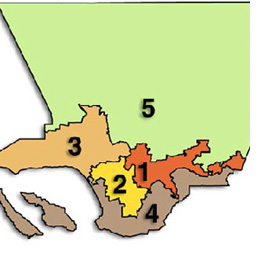 As a member of the Board of Supervisors since 1994, I’ve had the privilege and responsibility of representing nearly 2 million people woven together in a district that encompasses the Westside, the San Fernando Valley and the Las Virgenes region—all in the virtual shadow of the Santa Monica Mountains.
As a member of the Board of Supervisors since 1994, I’ve had the privilege and responsibility of representing nearly 2 million people woven together in a district that encompasses the Westside, the San Fernando Valley and the Las Virgenes region—all in the virtual shadow of the Santa Monica Mountains.
The residents of the Third District share more than a cohesive geography. Although ethnically diverse, they share common government services, transportation, environmental interests and much more.
Now, all this is being placed in serious jeopardy by a bald-faced gerrymander that is completely unnecessary. Proponents claim it’s needed to comply with the law, but that just isn’t so.
Like the state and federal governments, counties must redraw their district boundaries every ten years to conform to the results of the U.S. Census. But unlike the recently completed state and federal efforts, which were performed by citizens’ panels, the county’s redistricting must be decided by the Board of Supervisors.
As part of this process, two proposed maps (denoted as T1 and S2) were submitted this week that would radically redraw the Board of Supervisors’ district boundaries, leaving communities fragmented and an estimated 3.5 million people suddenly represented by a supervisor for whom they never cast a vote. Worse, some of these same people would be denied the right to vote for a supervisor for as long as six years because of the timing of elections.
The scope of the fallout would be vast and swift, potentially undermining the ability of communities to speak with one voice as advocates for their common interests. For example, the San Fernando Valley, which has fought hard to maintain its own identity, would be carved into three different districts. Hollywood and mid-Wilshire, meanwhile, could be included in a district with such distant cities as Lomita and Cerritos.
(Here are the current district boundaries. Click here for the T1 plan and here for the S2 plan.)
As you know, I’m currently in my final term as a supervisor so I have no personal interest in the electoral composition of the districts—even if it means that, for my term’s duration, I would no longer represent communities I’ve been honored to serve for nearly two decades. However, I’m utterly convinced that these redistricting schemes would significantly injure our ability to fight together to improve transportation in our communities, keep a close watch on development issues, extend health care to our underserved population and protect the environment of the Santa Monica Mountains and the north Santa Monica Bay.
The county’s redistricting plan must adhere to the Federal Voting Rights Act, a bulwark of the civil rights movement in our country and a guarantor of democracy for all Americans. The Voting Rights Act protects the rights of designated minorities to an equal opportunity to elect candidates of their choosing. Both of the proposed maps create two districts in which Latinos would comprise more than half the voting-age citizens, instead of one such district now.
But contrary to the arguments put forward by supporters of the proposed maps, their adoption is not required by this law. The Voting Rights Act requires an equal opportunity for minority groups; it does not require the creation of districts in which a single minority group comprises more than 50% of the voting age citizenry. The Federal courts have ruled that “fifty percent” districts are only required when voting is so racially polarized that non-minorities consistently vote against minority-preferred candidates to such an extent that those candidates are denied an equal opportunity to win.
Frankly, the notion that non-minorities won’t vote for a minority candidate in L.A. County is antiquated. Los Angeles in 2011 is not the same as the Los Angeles of forty, thirty or even twenty years ago. Our county is politically and socially far more mature and broad-minded.
In the last decade, many elections have been won by Latino candidates even where Latinos did not represent a majority of the voters. These candidates include Mayor Antonio Villaraigosa, Sheriff Lee Baca and County Assessor John Noguez.
I strongly believe that it is possible to redistrict this county in a manner that protects the voting rights of minorities without dismembering established communities of interest, without shifting nearly 40% of our population from one district to another, and without relying on antiquated assumptions about the voting behavior of different segments of the electorate. The federal courts have given us the roadmap to get this done, and have consistently rejected efforts to use the Voting Rights Act in the way the backers of these new plans propose.
The Board of Supervisors will hold a hearing on the proposed redistricting plans on Tuesday, September 27, at 9:30 a.m., in Room 381 of the downtown Kenneth Hahn Hall of Administration, 500 W. Temple St. I urge you to attend and make your voice heard on this crucial issue for our community. If you’re unable to attend, I ask that you communicate your concerns to the board members by writing or e-mailing
[email protected].
Posted 8/19/11




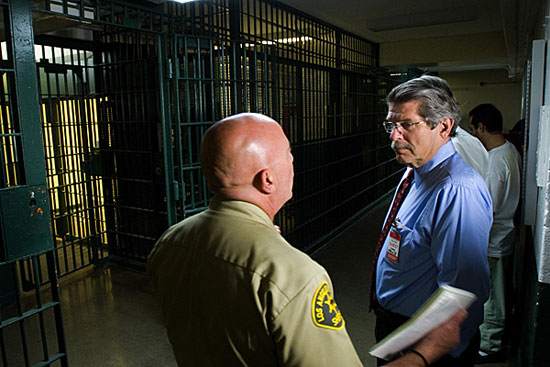










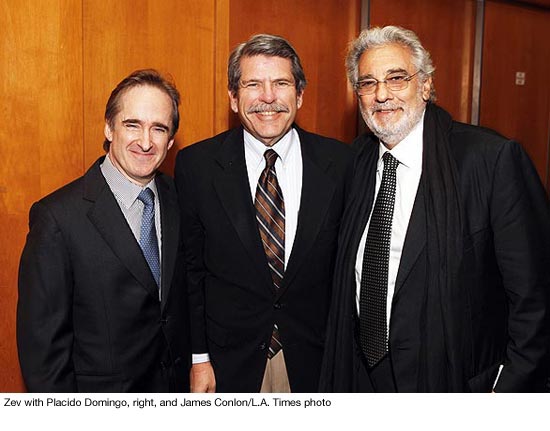





 Check for the latest closure information
Check for the latest closure information








